This article is part of SuperCombo’s ongoing indie fighting game coverage. This time, we talk about Checkmate Showdown, an interesting mixture between chess and a traditional fighter – now wishlistable on Steam and coming out in November 2023. The game went through an open beta phase back at the end of August and in the first weekend of September 2023. I have used that time to explore the game and give myself an idea of its mechanics.
A tale of kings and pawns, eternally retold
Chess is a game with an incredibly rich story that is still extremely popular, even after the historical Deep Blue’s victory against Kasparov in 1997 that showed how a machine could play better than the best human player. Maybe surprisingly, this event didn’t stifle the interest in the game – if anything, it led to the creation of sophisticated open-source chess engines like Stockfish that are regularly used by players of all skill levels to refine their strategies and check the viability of certain tactics. With the recent Netflix series The Queen’s Gambit and the bouts of Magnus Carlsen and Hikaru Nakamura on the chessboard (plus some – let’s call them “interesting”- scandals involving alleged cheating and sex toys), chess keeps a relevant place in pop culture and shows no signs of stopping.
Video games are not new to tackling chess. One of the most well known example is Battle Chess, which added a fresh coat of nice graphics to the basic flow of the game, without changing any of the relevant rules. While, on the opposite side of the spectrum, Chess 2: The Sequel (yes, this is the actual title of the game) tried to spice up the rules to make games more dynamic. Of course there have been even more experimental titles in recent years, like Shotgun King, which looked at the rules of chess and just had a deep laughter at them, while crumpling them into a ball of paper and throwing them into the garbage bin.
Now, what if someone decided that mixing fighting games and chess was a good idea?
And what if that someone was right?
Checkmate!
Checkmate Showdown is a game developed by Mana Void and Bad Rez Games and is precisely what it says on the tin: You have your chessboard, you have your pieces, but every time a capture SHOULD take place, a one-round fighting game match is played instead. Knight vs Bishop? Queen vs King? All of those and more!
The winner of the match determines whether the capture was successful or not. But, however it goes, the surviving piece will still keep a chunk of the damage they have been inflicted.
During an attempted capture, the defending and the attacking pieces can also receive an assist from nearby units. It must be noted that, to keep things fairer for the attacker, only they have access to their Ultimate Move, right from the beginning of the match.
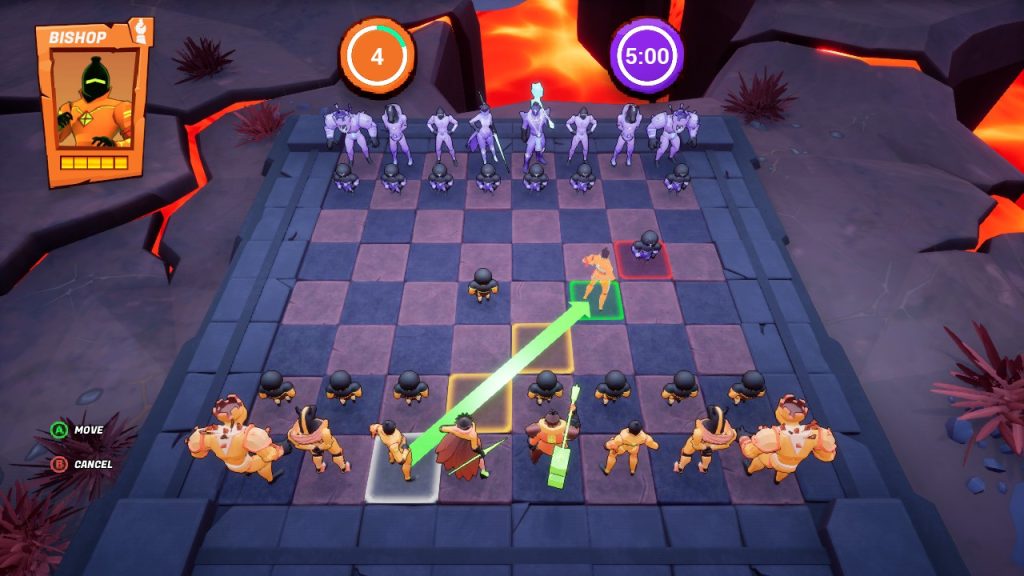
Pieces move exactly as they should in a real chess game.
Abide by the rules, until you don’t
Surprisingly enough, Checkmate Showdown implements almost all the rules of chess to the letter. You have en passant capture, you have castling, you have pawn promotion – and they all behave exactly as you would expect while playing a standard game of chess.
As in traditional chess, there is also a timer per each player, with a little bit of grace time before it start ticking down. The standard timer in the open beta was set to 5 minutes, which is a decent amount of time to avoid overly long matches.
The one big difference is that, contrary to standard chess, not only the King is allowed to move in a position that would put them under checkmate, but the concept of checkmate itself is turned on its head. In traditional chess, a game is over when the King cannot avoid capture in any way. For context, the King is not allowed to move on a square that is threatened by an enemy piece, thus limiting its movement options even more. In Checkmate Showdown, the only way to win a match is to capture the enemy King.
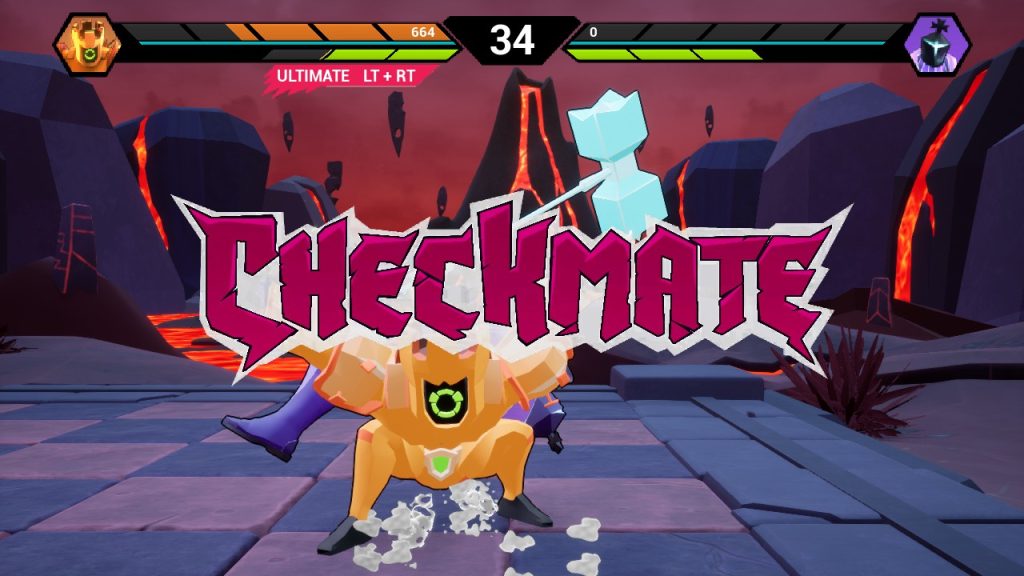
This is what you get when you jump into the Rook’s Shootdown Backbreaker, “King”!
It’s good to be the King
Checkmate Showdown features a fighter for every major piece: Knight, Bishop, Rook, Queen, and King. All of them start with 1000 health units and have significantly different gameplay options.
- The Bishop is a very fast piece that shows some sentai influence by having something akin to a rider kick, together with good mobility
- The Knight is technically quite slow, but has access to a sort of spiritual clone that helps them cover the space effectively
- The Rook is the dedicated grappler, with a super Spinning Piledriver an anti-air Shootdown Backbreaker to boot
- The Queen is even more mobile than the bishop and sports several multi-hit moves, together with a very good lounging spinning drill attack
- The King uses his army of Pawns to defend himself and set up some strong offence, together with his heavily damaging normal moves
While their character designs are fairly basics, I was delighted to recognize some of the influences on their movesets. The Knight takes a page from Mortal Kombat’s own Noob Saibot and Jojo’s stands, the Bishop has some clear Kamen Rider influences, the King went to Shao Kahn’s School of Hammering, the Rook learned from the best grapplers. It was relatively surprising to find out that the game has no dedicated zoner and almost no projectiles (except the Pawns the King can throw). Each piece felt relatively good to play, but in my experience those with more limited movement speed, such as the Knight, felt very “heavy” to maneuver.
Pawn stars
Now, if you’ve read the previous section carefully, you might have noticed something amiss: where’s the Pawn?, you might have asked yourself. Well, the Pawn is, in my opinion, the weakest and the strongest piece at the same time. As in regular chess, the Pawn has abysmal movement options and can’t even capture pieces in front of them. Yet, it has a strength that no other unit has: Pawns can capture other pieces without the need of playing the fighting game portion of the match. No matter if Queen, Rook, Bishop or Knight. No matter how much remaining health they have. If a Pawn initiates a capture, that capture is guaranteed.
Surprisingly enough, this works even against the King himself. You’ve read it right: A single Pawn can capture the King immediately, if the conditions are correct, thus ending the game.
On the other side, though, Pawns are also captured immediately, so their biggest strength is also their biggest downside. As Pawn promotion is present in the game, if you manage to get one of them to the other side of the board you can also replace them with another unit of your choice (except the King). Pawn management might be crucial to succeed at this game, even more than in normal chess.
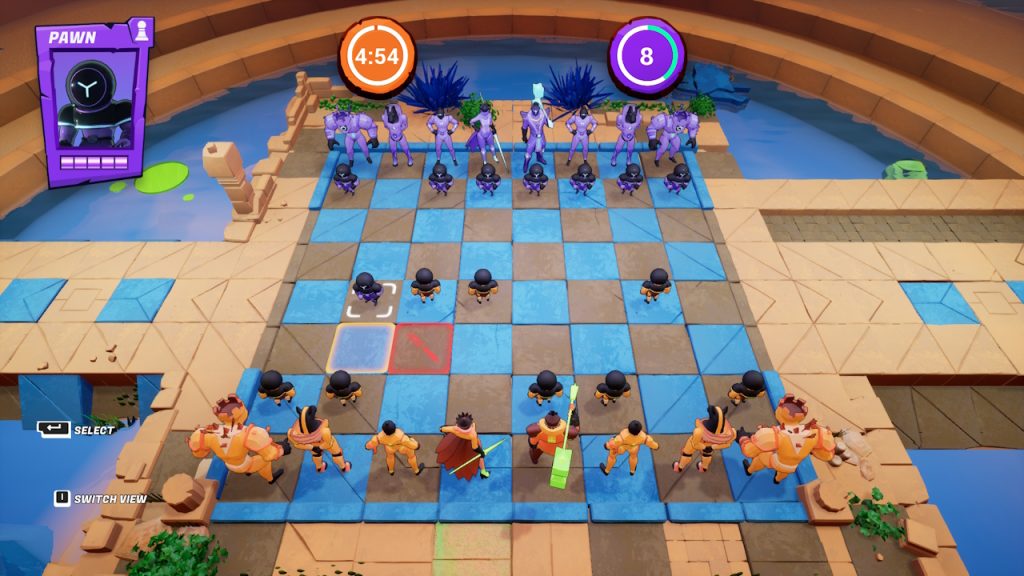
It was very cool to see the en passant capture rule implemented in the engine
A simplified control system
Now, let’s get to the nitty-gritty of the control system. Checkmate Showdown uses a relatively simple system. You have three action buttons (Light, Heavy, Special), a Jump button (but you can also press up to jump), a Grab button, an Assist button, and a combination of two buttons to unleash the Ultimate Move.
Blocking is performed by simply holding back. Tapping back at the same time as the opponent attacks will result in a parry with reduced blockstun.
The game has no crouching, much like Fantasy Strike and 52Beatup, which tends to simplify the mental stack a little when being on the defense, at the cost of severely limiting the mix-up options on offence. This is however offset by two factors:
- A Guard Break mechanic: The blocking character will start flashing red after blocking some attacks, resulting in them being opened up if the strikes keep coming.
- Automatic side correction on air attacks, which facilitates cross-ups anywhere on screen
Light and Heavy attacks chain into canned sequences that can be – for the most part – mixed and matched. The last attack of a canned chain might or might not be special/super cancelable. There are also universal launchers tied to down plus Heavy.
Special moves require a stock to be performed. The special bar refills automatically and every character has access to a maximum of three stocks. Each character has access to different specials, tied to a single direction pressed together with the Special button.
By pressing LT+RT on a pad (or U+O on keyboard), a player can also perform their ultimate move, which is only available to the attacker during a capture.
In a surprising choice for a 2D fighter, attacks don’t deal any form of chip damage on block, Ultimate moves included.
The open beta didn’t feature control remapping, but this will definitely be available in the retail version.
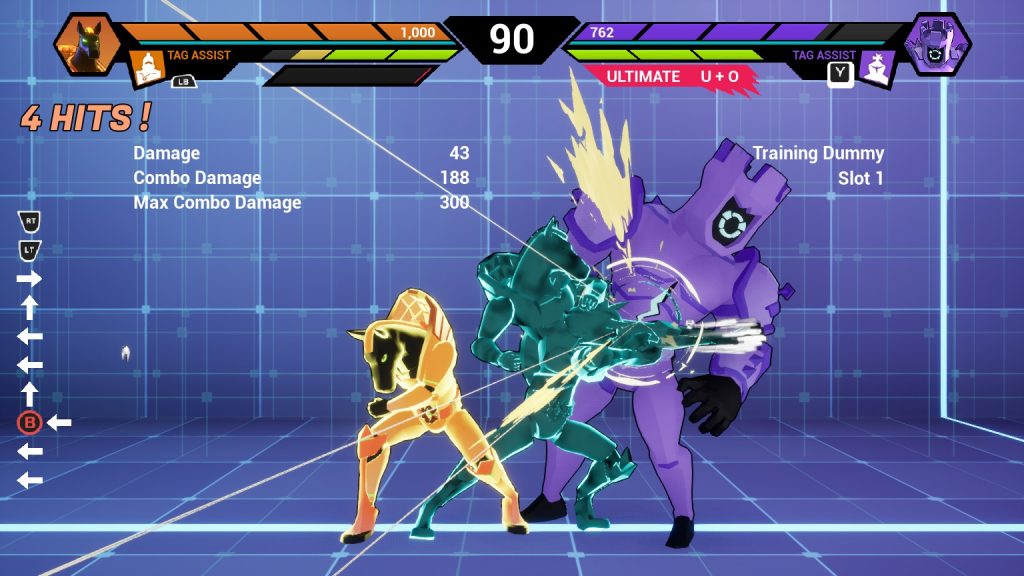
KNIGHT SAIBOT! KNIGHT SAIBOT!
An interesting experiment
As a very, very casual chess player (I just know the rules, but that’s it) and a long-time fighting game player, I enjoyed exploring this concept. My impressions are positive, but I think balancing this game might become a hard endeavor. Having experience with chess will surely help, but the fact that captures aren’t guaranteed (except when Pawns are involved) makes this game its own beast. One can’t approach it either as plain chess or just as yet another fighting game – which might be either a blessing or a curse (or both).
One thing of note is that the absence of crouching and low attacks, compound with no chip damage, makes consistent pressure hard. The only real mix-up is strike/throw, which means that turtling is an alluring option – until Guard Break kicks in. I’m not sure how this will play in the grand scheme of things, but needs to be taken into account and battle-tested. During my limited time with the game, I couldn’t play it against another human – making this the hardest part to gauge.
The fact that Pawns skirt the rules of the fight makes it twice as fascinating, because veteran chess players will surely exploit this feature to give weight to a more tactical approach. I’m genuinely eager to watch some high level matches, as soon as the game releases in November.
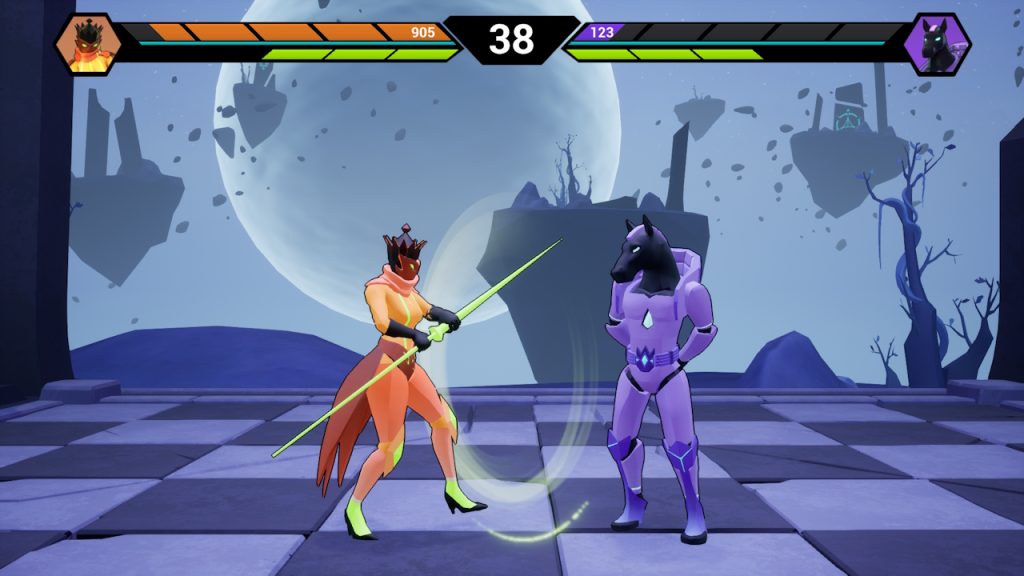
The backgrounds are quite well rendered, while the animations and key poses of the characters might feel a little stiff
How to play it?
Checkmate Showdown is currently dormant, while waiting for the full release in November 2023. In the meanwhile, you can check out the Steam page for wishlisting it and follow the developers on Twi(X)tter through their official game profile. The game also has as an official Discord server, for news, updates and community discussions.
Summary
Name: Checkmate Showdown
Developer: Mana Void, Bad Rez Games (Checkmate Showdown Twitter/X, Mana Void Linktree, Bad Rez Games Twitter/X, Discord)
Available on: PC (Steam)
Price: 19.99USD (15% discount launch)
Release date: 15 November 2023
Engine: Unreal Engine
Netcode: Rollback netcode
In one sentence: Chess meet fists in this strategy-based fighting game, where both strategical thinking and a good board positioning is everything.
Special thanks to the Checkmate Showdown team for providing a key for the first open beta test
If you are interested in more coverage about indie fighting games, you can find me on Twitter at @AndreaDProjects
Other articles in the series
- Battle Craze!! — all good things come in threes
- Duels of Fortune – air-dashing action between simplicity and openness
- Rainbowcore Hypernova – prismatic splashes of genre-mixing madness
- Etehfowr Against – a charming, simultaneous 2v2 chaos
- Resistance 204X – a cyberpunk spiritual successor to Nidhogg
- Input Chaos – a twin stick ragdoll neon nightmare

